Importance of Storytelling in Creating Perfect UX Design
Storytelling is no longer limited to our childhood memories. I mean who doesn’t love to experience the warm and fuzzy feeling of lying in bed with their parents reciting a story. And now, it seems businesses are intricately linking a similar concept while marketing their products as well.
Over recent years, “Storytelling” has taken a major leap forward, leading to widespread adoption. I feel that it’s one of the most powerful approaches as users are converting without much hassle. All this happens so efficiently. Much better than search engine optimization, creating crazy visual callouts or any other interactive looking element can do otherwise. Much like the way we crave to see a moral at the end of a book, with a storytelling experience we expect to find the purpose of the storyteller (business).
For example, Mr. X worked as an in-house copywriter and designer for a prominent marketing firm. Once he applied for a job that didn’t have any of the credentials his employers were in search of, and still, he got selected, out of the pool of more qualified and skilled competitors. Do you know why? The employer loved his story. Believe it or not, stories can create an enormous impact on the viewer, so it is very important to choose and develop them wisely.
All stories have the same impact – Probably not!
According to several Google sources, 80% of B2B companies say they invest in some form of content marketing, and it shows no signs of slowing down. This leads us to one question how do I get my piece of content to rise above its competition? Well, tell me a story! With so much storytelling fuss going on it is very crucial to know what story to tell to succeed. Now I am sure you must have heard an ample amount of stories.
Do you remember them all? No! There is only a handful: why? Similarly, there is so much content out there vying for our attention then why some stories seem random while some stick in our minds?
Visual storytelling compels
Being a UX designer, you must be wondering why do I need to worry about telling stories. In fact, almost everyone has this misconception that storytelling is all about literally sitting at the desk all day long and writing a tale of heroics or romance or wizards who speak Latin. No! It is much more than that!
Well, I am not saying that your story needs to be complicated. It’s completely alright if everyone knows the basics. The key is to blend things in such an effective way with your clients and your viewers.
A story can be told with a single image and twenty visuals as well. If the message can be passed effectively with a single image then there is no point in using twenty. But if god-forbid your story needs twenty visuals to make people understand well, then you must work on all the twenties and not go for just eight.
Less is more is not a cookie-cutter solution; it certainly depends on the situation. Just make your story as detailed or simple as it needs to be: nothing more, nothing less. For that you need to learn the Art of Good Storytelling. Down below I would like to mention some of the most classic structure of a story comprises of these parts:
- Beginning (setting and exposition)
- Conflict (a problem)
- Rising Action (solving a problem)
- Highest point or culmination (touching the core of a problem)
- Falling action (that leads to solving the problem)
- Outcome (how the problem is solved)
Have a close look at the structure, I am sure you will come across many similarities with a product design process.
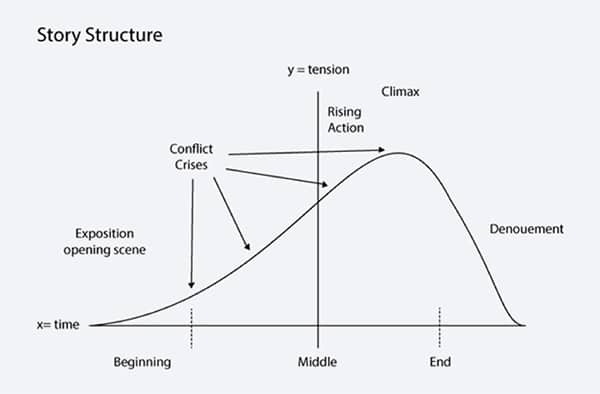
How does storytelling reflect in a UX & UI design process?
A basic storytelling procedure requires a character and it becomes much easier to wrap the story around the features. For instance, Daniel is a fictional character. Can you think of how would his live chat screen look like and what would be he chatting about? Similarly, in the Product design storytelling, it’s all about a product and user experience storytelling.
The theory is great and all, but we know the business and all we want is the best possible results. Knowing the down and dirty is something we think of day and night; in simple words- “what’s working and how do I implement it?” So I’ll stick to just that. Story telling includes a plethora of ways. You can simply call it a multifaceted experience; a set of combinations weaved together forms a story like never before.
The key facets of UX include:
- Type of language: Narrating a story becomes engaging and appealing especially when using certain words. First of all, you need to decide whether you want to standout somehow, for example by using profanities, or is your style more calm and collected? What kind of words you will be using; funny, elegant and classy or elitist and critical?
- Tempo & tone of voice: How is the pace? Are you moving too fast from one subject to another or do you plan to style things in a more relaxed manner? In addition to this, what do you want in regards to the overall feel or how you want the UX to be- should it be more formal, casual, or something in-between? Sorting these priorities mostly depend on what type of relationship you want your end-users to have with your brand.
- Interactive design elements: Now I love experimenting and one of the best—and boldest—ways to tell your story is through interactive elements in your design. Take an example of companies like “Humaan”. The about page has two cool features that stick out.
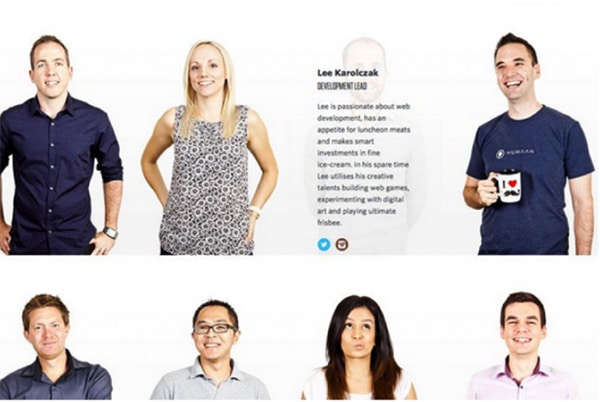
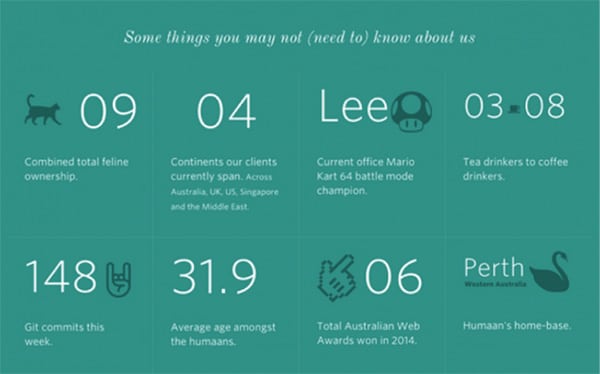
- Gamification: Have you ever thought of adding game elements to your existing website? If simply put, I am talking about the progress bars, reward points programs, maybe actual games on the website. I am sure you must be wondering why? Unlike passive design, Gamification is one such element that engages visitors.
Dropbox uses this technique to enroll more and more people into installing the software, sharing a folder and inviting others. The to-dos were quite simple. Check all the small, easy tasks and as a reward, you receive an increased amount of storage.

- Active Visuals: This one is quite interesting; it emphasizes on creating visuals that respond to users’ actions. There is no rocket science involved; even adding a simple scrolling or clicking animation has the potential to trigger more reactions.
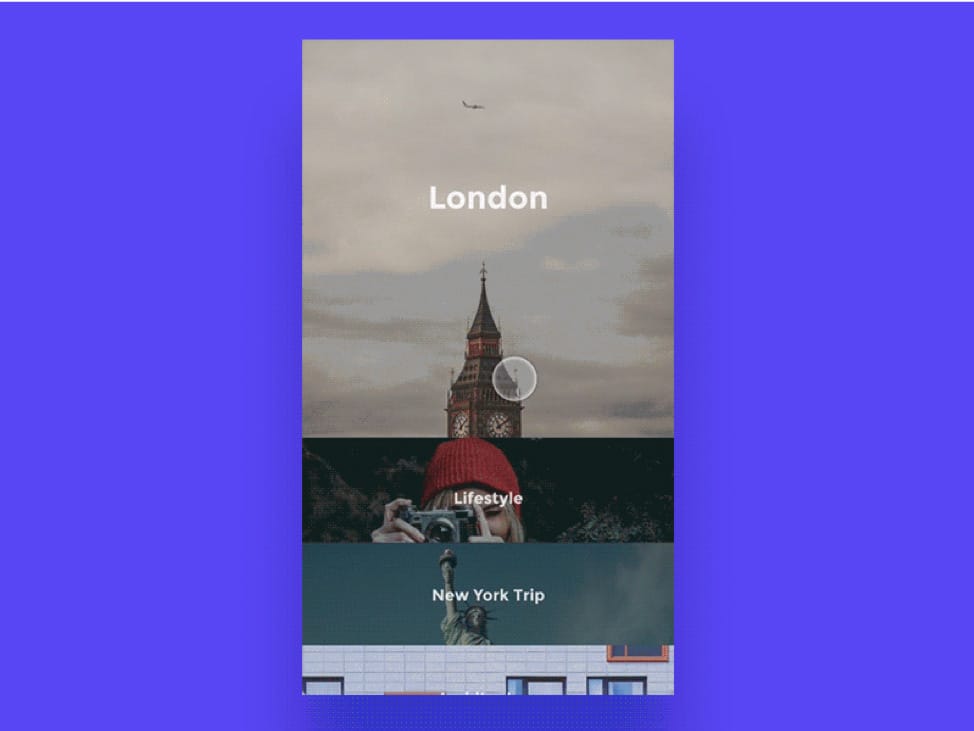
- Look at the bigger picture: Every story has a beginning, middle and an end but what makes the difference is the experience. So before you finalize anything else, try making a detailed experience map for the entire process in prior.
- The context: There is no denying in the fact that data has its own ziltch value but if not presented in the right context; it won’t be compelling enough for the user to delve deeper. Lessen the cognitive load and everything would be fine! Try to involve the users in the story that you tell, so that they feel connected and become interested. Simple or complex, your story should get the job done.
Final Verdict on Storytelling
Storytelling in UX is not easy but having a passion to do could be a good starting point. Always remember, nobody buys your skills, they buy your idea, vision, dreams! And the power of storytelling can make better UI & UX designers across the globe.





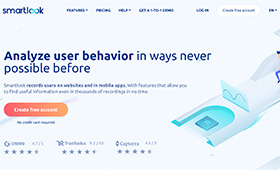

No responses yet to “Importance of Storytelling in Creating Perfect UX Design”